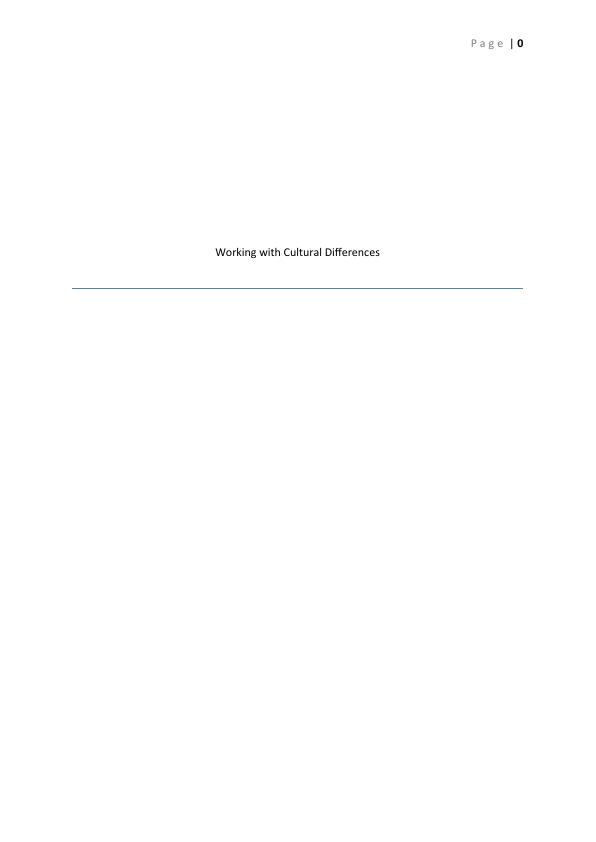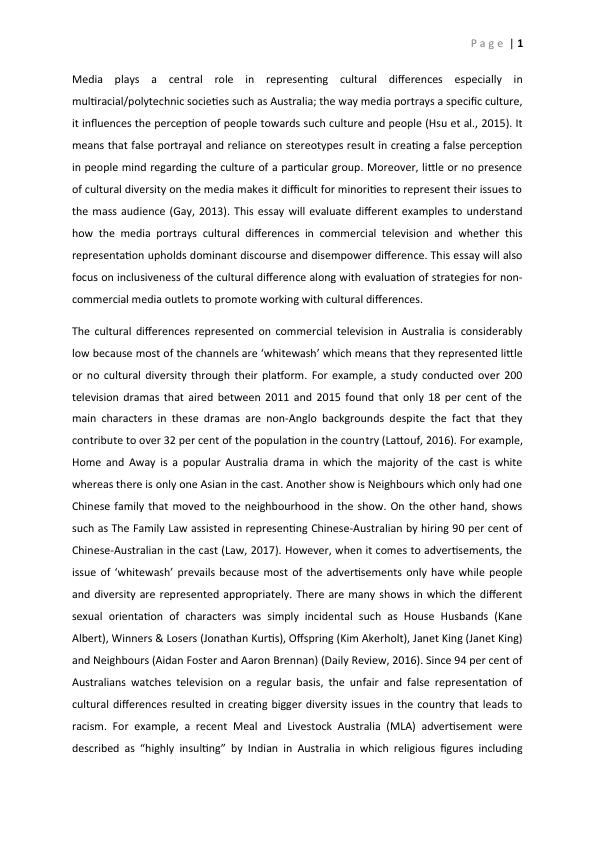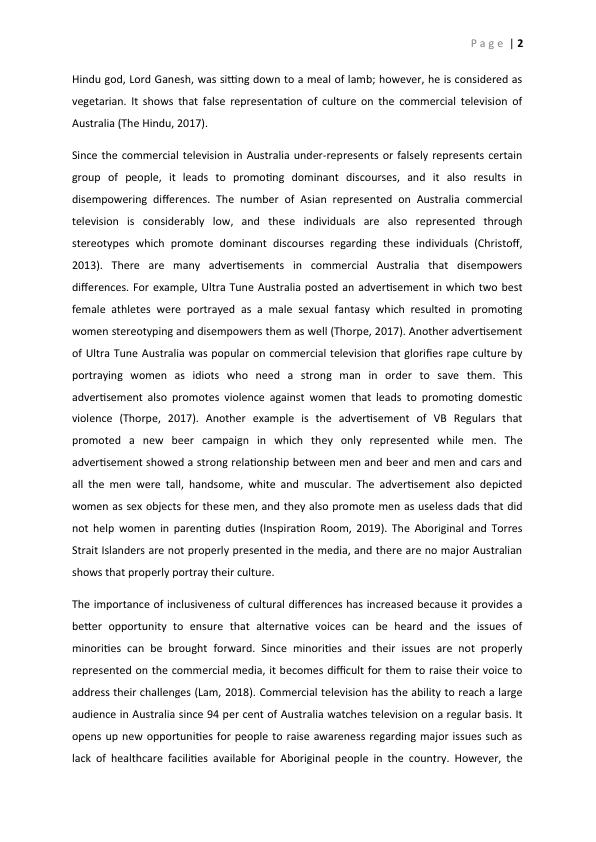Working with Cultural Differences
Compare experiences of media consumption and reflect on how it shapes understanding of cultural difference.
7 Pages2056 Words50 Views
Added on 2023-01-19
About This Document
This essay evaluates the portrayal of cultural differences in commercial television, focusing on the impact on perception and representation. It discusses the under-representation of cultural diversity in Australian TV shows and advertisements, and the promotion of dominant discourses and stereotypes. The essay also explores the importance of inclusiveness and strategies for working with cultural differences in non-commercial media outlets.
Working with Cultural Differences
Compare experiences of media consumption and reflect on how it shapes understanding of cultural difference.
Added on 2023-01-19
ShareRelated Documents
End of preview
Want to access all the pages? Upload your documents or become a member.
Working with Cultural Differences | Assignment
|9
|2056
|212



